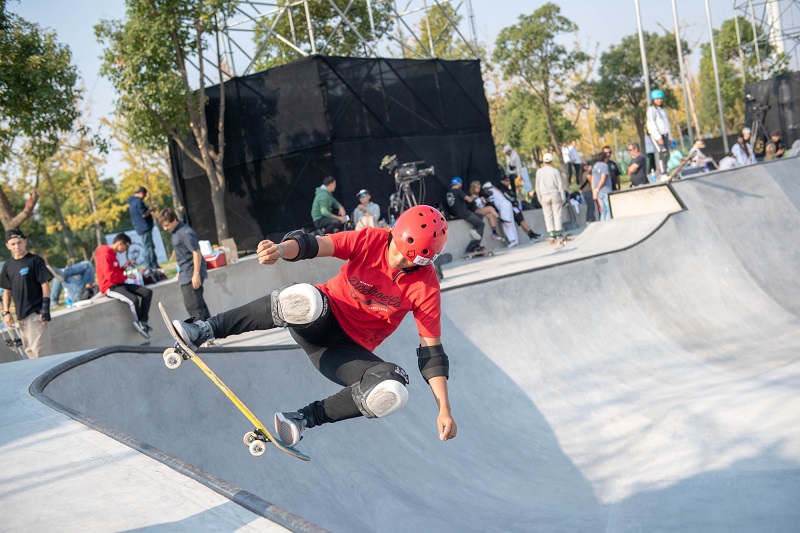
The world of skateboarding began underneath the haze of the Californian sun in the 1950’s. Yup, if you’ve ever asked yourself who invented skateboarding, it was surfers who wanted to be able to ride the sidewalks, like they did the waves, and so thanks to a block of wood and four roller-skate wheels, the amazing activity was born. Since then, it has evolved into one of the largest sporting cultures globally, with it now being immensely popular in many different places. Nevertheless, even though there are massive skate scenes in countries such as England, Spain or Brazil, the epicentre of skateboarding remains in sunny California.
However, there’s one country where skateboarding has exploded in popularity in the last few decades, and is now producing skateboarders so talented that they’re raising the level of the sport worldwide.
Let’s give you the lowdown then, on the rise and rise of skateboarding in Japan.
Back In the 90’s
Whilst it first crept into the mainstream in many places during the 1970’s, it wasn’t until the 1990’s that skateboarders started to, increasingly, appear on the streets of the Japanese capital. Tokyo has long been a city that embraces all sorts of counterculture, especially in the area of Ura-Harajuku. Also known as Ura-Hara, this district of colourful backstreets is a renowned hotbed of alternative energy, where its youthful patrons revel in hip-hop, graffiti, goth, and seemingly every subculture possible. No wonder then, that the rebellious nature of skateboarding became super attractive to many who hung out there.
This surge in popularity eventually led to some remarkable skateparks being built in both Tokyo, and the country. In the capital, there’s the incredible Miyashita Skatepark, which sits atop a shopping centre, and was designed by American skate legends, Paul Rodriquez and Lance Mountain. There’s also the indoor Murasaki Park Tokyo, nicknamed Amazing Square, which boasts a multitude of both street and transition designs, plus it features a massive thirteen-foot-high vert-ramp. Then elsewhere, there’s the Kitakyushu Skateboard Park, a massive concrete skater’s wonderland, located within a gorgeous public park in the city of Kitakyushu.
The Modern Day
All these fantastic facilities, mixed with the street skating that was taking place, generated a large output of immensely talented Japanese skaters, who are making waves worldwide with their effortless style and gigantic bag of tricks. Two of the brightest are, the nineteen-year-old Yuto Horigome, who grew up shredding the previously mentioned Amazing Square, and the fourteen-year-old Momiji Nishiya, who was born in Osaka, and regularly could be spotted grinding the many kerbs the city had to offer.
In fact, Horigome and Nishiya both managed to capture gold medals last year, in the first ever time that skateboarding was a sport in the Olympic Games. To make it even better, the 2020 Olympic Games (which were delayed by a year) took place in Tokyo, meaning they got to celebrate their unprecedented wins in their home country. Interestingly, skateboarding being in the Olympics meant it was the first time that revellers could bet on the sport, and as it continues on its upward trajectory, this will become a regular occurrence.
If you enjoy betting on sport then you need SBO.net in your life, where you can find the best safe betting sites available. These selected sites will give bettors everything they need to get the most out of their gambling experience. There are enhanced odds, mobile apps available, in-play betting, and even partial cash-out, so if things aren’t going right, you can still walk away with some winnings. Plus, there’s a whole raft of sign-up bonuses, making sure you start victorious. What more could you want?
The Future
With the Olympic’s skateboarding being such as success for Japan, showcasing to the whole country what an awesome and fun sport it is, there are reports of many younger children getting their hands on their first setup. There’s no doubt that Japanese skateboarders will continue to push the boundaries of what was previously thought possible, with more outrageous tricks, more medals won, and styles that are buttery smooth, both in the present, and for many coming years. Plus, with how young Horigome and Nishiya are, their already impressive careers are only in their infancy. The future of Japanese skateboarding isn’t just bright, it’s positively glowing.
